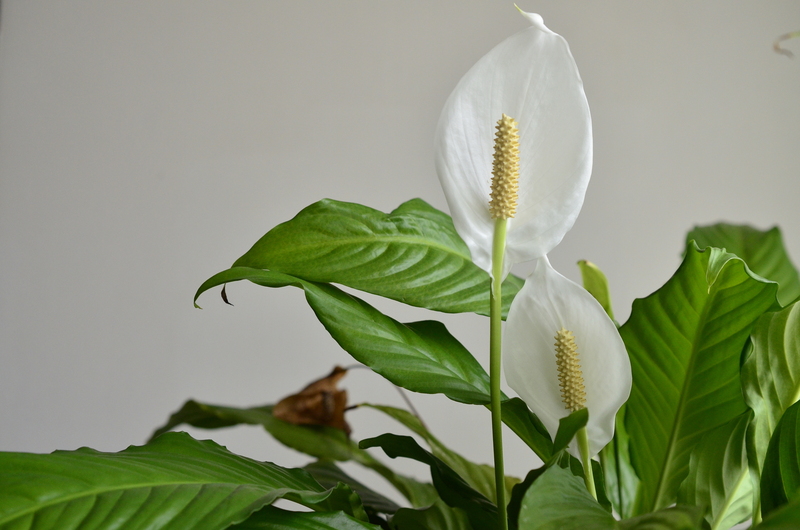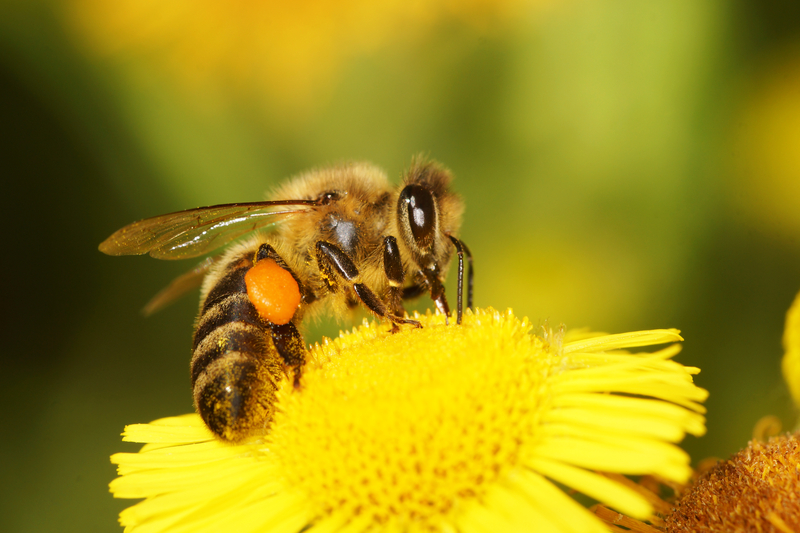Sustainable Gardening: Your Fight Against Climate Change
Posted on 18/08/2025
Sustainable Gardening: Your Fight Against Climate Change
Sustainable gardening has taken root as a meaningful response to environmental challenges, especially climate change. By cultivating our yard, balcony, or community space with ecological principles in mind, we participate actively in building a better, greener future. In this comprehensive guide, we'll explore how you can make your garden a front-line defense in the fight against global warming, reduce your carbon footprint, nurture biodiversity, and create an eco-friendly haven.
What is Sustainable Gardening?
Sustainable gardening is a method of gardening that works in harmony with nature. It reduces negative impacts on the environment and even has the potential to help reverse climate change. In simple terms, a climate-friendly garden creates a natural ecosystem that uses fewer resources, produces less waste, and supports the health of plants, wildlife, and humans alike.
- Eco-friendly gardening avoids harmful chemical fertilizers and pesticides.
- It makes the best use of natural resources like rainwater and local plants.
- It embraces biodiversity to create a resilient, thriving landscape.
Why Does Sustainable Gardening Matter in the Fight Against Climate Change?
Climate change is fueled by greenhouse gas emissions--especially carbon dioxide--from burning fossil fuels, deforestation, and unsustainable land use. Gardening sustainably helps counter these problems by:
- Capturing and storing carbon from the atmosphere in soil and plants.
- Encouraging biodiversity, which supports healthy, resilient ecosystems.
- Reducing emissions linked to synthetic fertilizers and pesticides.
- Lowering garden waste through composting and recycling nutrients.
- Minimizing water usage and preventing pollution of waterways.

Climate-Resilient, Sustainable Garden Design
Building a sustainable garden begins with thoughtful design. By choosing the right plants, positioning, and materials, gardeners can create landscapes that combat the effects of climate change.
Choose Native and Climate-Adapted Plants
Native plants are adapted to local conditions, requiring less water and fewer chemicals. They are more resilient to local pests and climate extremes. Consider the following:
- Local wildflowers and grasses can attract and support pollinators.
- Perennials have deep root systems, helping to sequester more carbon and stabilize the soil.
- Drought-tolerant species reduce water consumption and labor.
Optimize Garden Layout for Sustainability
Smart layout can significantly improve a garden's sustainability. Ideas include:
- Group plants with similar water and light requirements together to maximize efficiency.
- Install rain gardens or bioswales to manage stormwater and reduce runoff.
- Use tree canopies to provide shade, which reduces soil evaporation and creates microclimates.
- Incorporate wildlife corridors or hedgerows to allow animals and beneficial insects safe passage.
Practical Sustainable Gardening Techniques
Now, let's dig into the specific eco-friendly gardening practices you can adopt to make your personal green space part of the climate solution.
Composting: Turn Waste into Resource
Composting is a cornerstone of sustainable garden management. Rather than sending garden and kitchen scraps to landfill (where they emit methane, a potent greenhouse gas), compost them to create nutrient-rich soil.
- Use vegetable scraps, coffee grounds, eggshells, grass clippings, and leaves.
- Avoid adding meat, dairy, or greasy foods to avoid pests.
- Finished compost enriches your garden bed, reduces need for synthetic fertilizer, and stores carbon in the soil.
Tip: Starting a compost bin or pile is simple, and you'll soon see your waste transformed into black gold!
Mulching for Climate-Friendly Gardening
Mulch refers to a protective layer placed on top of the soil. Using organic mulch in your sustainable garden helps:
- Reduce water evaporation--saving water.
- Maintain soil temperature, providing a buffer against extremes caused by climate change.
- Suppress weed growth, reducing maintenance and herbicide use.
- Slowly break down and improve soil structure and carbon content.
Good mulch materials: shredded leaves, grass clippings, wood chips, straw, and compost.
Reduce Your Dependence on Chemicals
Sustainable gardening means phasing out synthetic fertilizers and pesticides. These products not only require fossil fuels to produce, but they also emit greenhouse gases and contaminate waterways. Instead:
- Adopt organic gardening practices, using compost and well-rotted manure for nutrients.
- Promote biological pest control by welcoming natural predators like ladybugs, birds, and frogs.
- Use physical barriers or hand-picking to control pests when needed.
Water Conservation Practices
Water shortages are becoming more frequent due to climate change. Water-wise gardening can dramatically cut your environmental impact:
- Collect rainwater with barrels to irrigate your plants.
- Use drip irrigation or soaker hoses to deliver water precisely to roots, minimizing waste.
- Water early in the morning or late in the evening to prevent evaporation.
- Choose drought-tolerant plants appropriate for your climate zone.
Grow Your Own Food Sustainably
Homegrown vegetables and fruits have a much lower carbon footprint than store-bought ones. Growing food in your sustainable garden means:
- Reducing transportation emissions.
- Decreasing the use of plastic packaging.
- Having control over the use of chemicals and water.
- Encouraging pollinators, which are vital for food systems and biodiversity.
Tip: Mix edibles with decorative plants in an "edible landscape" that's both beautiful and productive!
Regenerative Gardening: Taking Sustainability Further
While sustainable gardening focuses on maintaining the health of your soil and plants, regenerative gardening seeks to actively restore soil, ecological function, and community health. It's about leaving places better than you found them.
- Use no-dig or minimal-till practice to protect soil microbes and carbon stores.
- Plant cover crops in the off-season to prevent erosion, add organic matter, and lock carbon into the soil.
- Practice polyculture--diversifying plant species in one area--mimicking natural systems for resilience.
These practices help soil absorb more carbon dioxide from the atmosphere, directly contributing to the fight against climate change.
Sustainable Gardening for Biodiversity and Wildlife
A garden is not just about plants--it's about creating habitat. The more species your garden supports, the more resilient and climate-friendly it becomes.
- Grow flowers that bloom at different times to provide nectar year-round for pollinators like bees and butterflies.
- Offer nesting sites for birds and beneficial insects by leaving dead wood, building bug hotels, or installing birdhouses.
- Avoid "tidying up" too much in autumn--leave seed heads and plant material for winter food and shelter.
- Create a small pond or water feature to attract amphibians, dragonflies, and other wildlife, increasing ecosystem diversity.
Planting Trees: A Powerful Climate Solution
Every tree you plant contributes to carbon sequestration, cools the surrounding air, provides habitat, and helps prevent soil erosion. When choosing trees for your climate-resilient garden:
- Select native trees that are well-adapted to your region's shifting climate.
- Consider species with large canopies to provide wildlife homes and shade.
- Try fruit or nut trees to combine food production and sustainability.
Tools, Supplies, and Materials for a Sustainable Garden
Even the products and tools you use can impact your garden's sustainability and climate footprint. Make conscious choices by:
- Buying hand tools made with sustainable materials rather than power equipment that burns fuel.
- Choosing pots made from biodegradable, recycled, or locally sourced materials.
- Reusing and repurposing materials such as pallets, brick, or old containers.
- Sharing or borrowing larger tools within your community to reduce manufacturing demand.
Did you know? The embodied carbon in power tools and plastics is significant; using manual alternatives saves energy and cuts emissions!
Creating a Community of Climate-Resilient Gardeners
The benefits of sustainable gardening multiply when we work together. Community and school gardens, garden clubs, and online forums are powerful ways to:
- Share seeds, plants, compost, and tools.
- Educate others about climate-smart gardening techniques.
- Pool resources for rainwater harvesting or group purchasing of sustainable supplies.
- Influence local policies to support greener neighborhoods.
By inspiring others, your garden's impact goes far beyond your backyard.
Overcoming Common Challenges
Transitioning to a sustainable, *climate-friendly garden* comes with some challenges. Here are tips to overcome common obstacles:
- Pests and diseases: Resist the urge for quick chemical fixes--focus on building soil health and biodiversity, which naturally curb outbreaks.
- Poor soils: Regularly add compost and organic matter; over time, even the toughest soil can be restored.
- Water shortages: Prioritize mulch, choose drought-resistant species, and invest in rainwater harvesting systems.
- Time constraints: Start small--container gardening or a single raised bed still makes a difference!

The Big Picture: Sustainable Gardening's Role in Climate Change Mitigation
As climate change accelerates, it's easy to feel that individual action is insignificant. But, collectively, our *sustainable gardening efforts* are part of a global movement to reverse environmental decline.
- The world's gardens and green spaces cover millions of hectares--improved management could capture huge amounts of carbon.
- By restoring soil health, we not only draw down carbon but also improve food security and water quality.
- A vibrant, biodiverse garden is a living message--a model of what's possible for others to see and replicate.
Conclusion: Start Your Sustainable Garden & Join the Climate Solution
Sustainable gardening is your personal fight against climate change. By making thoughtful choices, embracing nature-friendly practices, and spreading the word in your community, you help heal the planet from your own doorstep. Whether you're tending a vegetable patch, balcony pots, or a sprawling landscape, your green actions matter.
Begin today--compost your waste, plant some native wildflowers, collect rainwater, or join a local gardening group. Together, we can turn gardens into climate champions, cultivating hope and resilience for generations to come!
Ready to start your journey with sustainable gardening? Share your biggest challenges or favorite tips in the comments, and inspire others to grow their own climate-friendly gardens.

